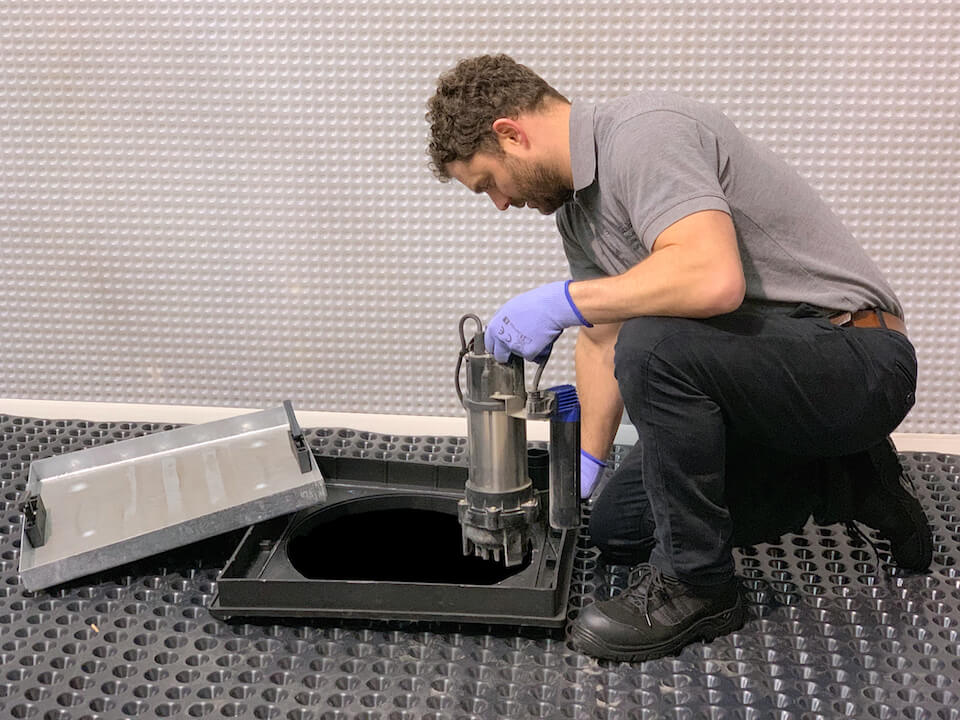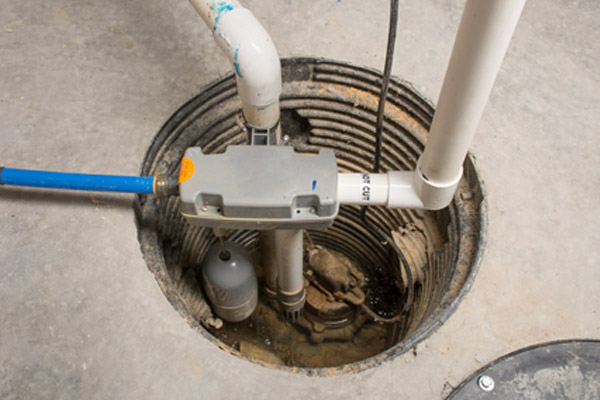Easy Methods for Maintaining a Sump Pump
Easy Methods for Maintaining a Sump Pump
Blog Article
The author is making several good points on the subject of Keep Your Sump Pump Clean, It'll Keep You Dry overall in this great article followed below.

Sump pumps are vital parts in numerous homes, specifically in areas susceptible to flooding or extreme wetness. They aid avoid water damages by efficiently eliminating excess water from cellars or crawl spaces. Nonetheless, like any other appliance, sump pumps require normal maintenance to ensure they work successfully when required the most. Cleansing your sump pump is a crucial part of its upkeep, and comprehending just how to do it appropriately can conserve you from costly repair work and possible catastrophes.
Intro
Keeping a tidy sump pump is essential for its proper performance and durability. Overlooking this crucial task can bring about obstructions, malfunctions, and ultimately, water damages to your property. Consequently, finding out exactly how to cleanse a sump pump is vital for property owners who count on these devices to maintain their cellars dry and safeguarded.
Indications of a Dirty Sump Pump
Understanding when your sump pump requires cleansing is essential for stopping prospective breakdowns. Some usual indicators that show a filthy sump pump consist of strange sounds throughout procedure, reduced water flow, and visible particles in the pit. If you observe any one of these symptoms, it's vital to cleanse your sump pump quickly to stay clear of any more problems.
Planning for Cleaning
Before you start cleaning your sump pump, it's essential to take some safety precautions. Beginning by turning off the power to the pump to prevent any kind of electric crashes. Furthermore, put on appropriate safety gear, such as gloves and goggles, to protect yourself from dust, particles, and possible virus.
Understanding the Sump Pump
Before diving right into the cleaning procedure, it's essential to have a standard understanding of how a sump pump works. Normally mounted in a pit or basin below the cellar floor, a sump pump includes a number of key elements, including a pump, a float switch, and a discharge pipe. When water builds up in the pit, the float switch triggers the pump, which after that pumps the water out with the discharge pipeline, away from the building's structure.
Step-by-step Guide to Cleaning Up a Sump Pump
Shutting Off the Power
Begin by separating the power supply to the sump pump to stop any type of crashes while cleansing.
Checking for Proper Performance
Prior to re-installing the pump, execute a fast test to make certain that the float switch triggers the pump properly. Pour some water right into the sump pit and observe the pump's procedure. If whatever is functioning properly, you can rebuild the pump and reconnect the power supply.
Removing Debris and Dirt
Make use of a container or a scoop to eliminate any type of visible particles, dust, or sediment from the sump pit. Dispose of the debris correctly to prevent it from blocking the pump or the discharge pipeline.
Cleansing the Pump and Float Switch Over
As soon as the pit is free from debris, thoroughly eliminate the pump from the pit. Evaluate the pump and the float switch for any kind of indicators of damages or wear. Use a soft brush or towel to clean up the surface areas and get rid of any accumulated grime.
Purging the System
After cleansing the pump and float button, flush the sump pit with clean water to remove any type of remaining dust or sediment. This will help make sure that the pump operates efficiently and successfully.
Maintenance Tips to Keep Your Sump Pump Clean
In addition to periodic cleansing, there are numerous upkeep tips you can follow to keep your sump pump in ideal problem:
Final thought
Cleaning your sump pump is a vital element of its upkeep and makes sure that it runs efficiently when you need it one of the most. By complying with the steps detailed in this overview and including regular maintenance into your regimen, you can expand the life expectancy of your sump pump and shield your home from water damages.
6 STEPS ON HOW TO CLEAN A SUMP PUMP PROPERLY
UNDERSTANDING SUMP PUMPS
Your sump pump plays a crucial role in protecting your home by managing and removing excess water. It primarily functions as a “shield”, guarding your basement against the damaging effects of water accumulation. The pump is housed in a sump pit in the lowest part of your basement, and its job is to pump out any water that collects there.
During heavy rainfalls or when snow melts rapidly, water can infiltrate your basement, posing potential risks like flooding, structural damage, and harmful mold growth. Here, the sump pump springs into action, pumping out the intruding water and directing it away from your home.
SAFETY FIRST
Before cleaning, remember to prioritize safety. Disconnect the sump pump from the power source to prevent any accidental electric shocks. Also, wear sturdy gloves to protect your hands from any sharp or dirty components within the pump.
REMOVE THE SUMP PUMP
After ensuring your safety, the next step is to remove the sump pump from its pit. Doing this might require careful maneuvering as you don’t want to damage any pump components. Once removed, clean the sump pit to remove any accumulated debris or sludge.
INSPECT THE PUMP
Inspect the pump for any visible signs of wear or damage. Check the power cord, float switch, and impeller housing. If any components look worn out or damaged, consider replacing them to ensure optimal performance.
CLEAN THE PUMP
Thoroughly clean the pump with warm, soapy water. Make sure to rid it of any dirt, gravel, or other debris that might impede its performance. You can use a toothbrush to clean the small, hard-to-reach parts of the pump.
REINSTALL THE SUMP PUMP
Reinstall the pump into the sump pit Make sure it’s positioned correctly to remove the water effectively Once it’s back in place, reconnect it to the power source TEST THE PUMP
Finally, pour some water into the pit to ensure the pump works correctly. It should start automatically and begin pumping out the water; if it doesn’t, check the power source and the positioning of the pump.
Remember, while cleaning your sump pump is an essential part of home maintenance, hiring a professional plumber for a thorough inspection and cleaning at least once a year is also important. This will ensure that your pump is in optimal condition, ready to protect your home from potential water damage.
BEST PRACTICES FOR CLEANING SUMP PUMP DISCHARGE PIPES
Regular Inspection: Regularly inspect your discharge pipes, especially during heavy rainfall or snowmelt periods. Look for any signs of blockage or damage. Early detection of problems can prevent serious issues down the line. Periodic Cleaning: Over time, sediment and debris can accumulate in the discharge pipes, impeding the flow of water. Regular cleaning helps keep the pipes clear and functioning efficiently. You can use a high-pressure water jet to effectively clean the pipes. Insulation During Winter: In colder climates, discharge pipes can freeze, blocking the outflow of water. Protect your discharge pipes from freezing temperatures by insulating them with foam pipe insulation. This will ensure the sump pump can continue to discharge water even in freezing conditions. Proper Positioning: The discharge pipe should be positioned to direct water away from your home’s foundation. Improper positioning can lead to water seeping back into the basement. Ensure the pipe is long enough and angled correctly. Installation of a Check Valve: A check valve prevents water from flowing back into your sump pit after the pump has pushed it out. Installing a check valve helps maintain the efficiency of your sump pump and reduces the risk of flooding. Minimize Pipe Turns: Every curve or turn in the discharge pipe can decrease the efficiency of water flow. By minimizing turns and bends in your discharge pipe, you can increase the efficiency of your sump pump. https://www.fullspeedplumbing.com/how-to-clean-a-sump-pump-properly9999/

Do you really like reading about ? Try to leave a remark down below. We'd be happy to find out your views about this piece. In hopes that you come back again later on. Appreciated our piece? Please share it. Help other people check it out. Thanks a lot for your time spent reading it.
Visit Url Report this page